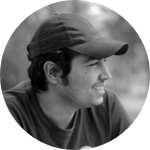About This Project
The strength and life span of a structure can be reduced by various ways. To restore its functionality, the rehabilitation cost is in the order of billions of dollars. This has put the construction industry under increasing pressure to use new and innovative materials and techniques with proven superiority in terms of their durability, performance and cost. This campaign will allow us to find the most effective material for seismic retrofitting.Ask the Scientists
Join The DiscussionWhat is the context of this research?
Despite the
recommendations and precautions provided by the current codes of practice, the witness of the vulnerability of structures to an earthquake can be attested by some collapses in recent years. This is because earthquakes do not read the code!
In the past, a structure that had become unsuitable to serve its purpose or that had decayed was replaced. That situation has changed recently due to the high expense of replacement. Now, we don't have any other economic and efficient option but the rehabilitation of structures. Hence, the employment of rational rehabilitation techniques is vital. FRP and TRM are considered as the most prominent retrofitting materials at present. The study seeks for the advanced one.
What is the significance of this project?
Textile reinforced mortar (TRM) is a new
material that keeps all advantages of fiber reinforced polymer (FRP) material while eliminates its drawbacks. To apply this system in practice, its seismic performance should be examined. On the other hand, for inception of TRM as an effective retrofitting material, in lieu of FRP, a comparative evaluation is important.
What are the goals of the project?
A numerical study necessary which could serve as an alternative platform of an expensive and time consuming experimental testing. Thereby, the aim of this project is to develop a finite element (FE) model to fill up this gap. The developed FE models will be used to investigate the behavior of reinforced concrete (RC) structures externally strengthened in flexure and/or shear with FRP and TRM system given different parameters such as location of a strengthening system, height of the building and FRP/TRM properties.
Budget
My budget will be as follows:
* Student stipend -500 $ (for conducting near about 1000 of analyses, an undergraduate student will hire to monitor the convergence of the analyses)
* Computer based modeling- 1500 $ (buying software and get access to the cluster computer)
Updates from this project will be posted on this web site, and findings will be presented at scientific meetings (conferences) and published in professional journals.
Meet the Team
Team Bio
I am a PhD student at the University of British Columbia (UBC), Canada. I am holding the EIT in Canada and actively connected with the Canada Society for Civil Engineering (CSCE), Structural Engineers Association of British Columbia (SEABC) and American Concrete Institute (ACI). I did an extensive numerical modeling and seismic analysis in my Master's at UBC.Project Backers
- 0Backers
- 0%Funded
- $0Total Donations
- $0Average Donation
